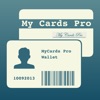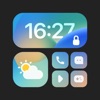All You Need to Know About Jailbreaking in 2024
Jailbreaking or bursting your iPhone or iPad out of the Apple paywall has been on the back burner in the past 5 years. After the first iPhone 5 was jailbroken in July 2007 came an avalanche of unapproved applications from the alternative Apple “app” store – Cydia.



But just as things started gaining momentum, the jailbreak and Cydia community suddenly went quiet. And as 2024 hits, the nostalgia of days gone when you’d make your iPhone or iPad do what you want hits like the cold.
In this quick read, we’re going to explore the history of jailbreak, and what it means to get jailbroken. We’ll also cover the differences between jailbreaking and Android rooting, plus reminisce on some cool old themes. Jumping right in!
What Is Jailbreaking?
That seems like a question well worthy of professional writers such as Essay Writing Services UK. You know how tough it is to install on an iPhone or iPad anything that isn’t from the Apple App Store, right? Well, jailbreaking allows you to bypass those restrictions set by Apple on your device. We’ll get to the “how” in a minute, but jailbreaking allows you to do all kinds of things with your iPhone.
A jailbroken phone done right can allow you to install emojis, themes, status bars, floating panels, 3rd-party keyboards and so much more on your iPhone. This might not all be obvious since Apple already lets you customize your phone a lot. That’s part of the reason why jailbreaking isn’t as popular as it used to be.
Jailbreaking is a privilege escalation achieved by exploiting a design flaw or bug in the system. Rooting escalates privilege on Android. However, these two are not quite the same thing. Jailbreaking in an iPhone or iPad allows the user to bypass security features by exploiting vulnerabilities or loopholes in the software. Rooting in Android mostly happens when the device’s bootloader which controls the manufacturer-installed OS is unlocked.
The best type of jailbreaking is untethered, which allows you to run apps and tweaks and reboot the device without any consequence. In semi-untethered jailbreak, the device needs to be jailbroken by an app on the device each time a reboot is done.
Why Jailbreak Your iPhone or iPad?
Apple gives you such a hard time changing device permissions and settings that you don’t feel like a device owner – more like a user. The lack of admin privileges got tech-savvy individuals thinking about how they could go around Apple’s restrictions. While jailbreaking wouldn’t get you superuser privileges like in rooted Androids, it could allow you to do a lot more with your iPhone originally.
A jailbroken phone can access apps outside of the App Store, can be customized, and alternative character input systems can be installed. The command line can also be accessed in some cases.
In earlier versions of iOS, up until 2011, AT&T was the sole carrier on Apple phones. this posed problems for iPhone users who felt AT&T was too expensive, didn’t fit their plans, or had poor cell service. Here now comes the early and humble beginnings of jailbreaking.
The History of Jailbreaking
The name George Hotz might ring a bell. Currently developing self-driving vehicle technology, Hotz is credited with the first jailbreak of an iPhone. In 2007 Hotz was only 17 years old and managed to remove the hardware that fixed AT&T carrier tech to the iPhone. He was then able to use the first-gen iPhone with a T-Mobile carrier.
After this first jailbreak, other attempts at jailbreak were made on the iPhone including installing a custom ringtone. The most prominent jailbreak initiative came from the hacker group iPhone Dev Team that released JailBreakMe or AppSnapp in October 2007. Users could easily swipe to start the jailbreak process. Apple’s response was to release a bunch of security patches aimed at stopping the jailbreaks.
Cydia
The iPhone Dev Team later released the “PwnageTool” for iOS2 in 2008, introducing Cydia – considered the world’s first app store. On Cydia, you can find, download, and install software and extensions on jailbroken devices. Users could customize their iPhones how they wanted- installing themes, tweaks, and other content. Users could also use unlock other carriers on the AT&T network, which at the time only supported 2G technology.
Cydia later released other jailbreaks including Spirit, a one-click tool accessible through the Safari browser. JailBreakMe 2.0 was released for iPhone 4 and right around this period Cydia’s popularity as an unofficial Apple app marketplace peaked.
Decline in Popularity
Since the release of iOS 12, jailbreaking has become less popular since Apple figured “hey if you can’t beat them join ’em”. Appl began integrating more jailbreak features into iOS, opened up the App Store more, and opened up its network to more wireless carriers. Apple has also made it more difficult to jailbreak the latest versions of its software such as iOS 17.
Besides, jailbreaks require that you stay on the lowest firmware possible, meaning you would never install updates and patches for your device. That is a problem in itself as most apps on the App Store now require frequent updates.
Legality of Jailbreaking
So, is it legal to jailbreak an iPhone or any other Apple device? Not really. While Apple had initially cited copyright violations, both the Librarian of Congress and the U.S. Copyright Office have ruled against that.
Apple itself has always discouraged jailbreaks saying they destabilize its devices and can open up iPhones and iPads to malware. Apple also says that jailbreaks can further shorten battery life, disrupt services like iMessage, and cause unreliable connections.
The Future of Jailbreaking
While jailbreaking has become more of a passion craft, there are always new jailbreaks being released with every new iOS version. Fewer developers are willing to work on jailbreaks as there is less incentive to do so. Apple has introduced new security mechanisms to counter jailbreaks while integrating even more tweaks and apps into iOS and iPadOS. Ironically, many of the initial devs leading jailbreak attempts now work with Apple.
While Cydia as a package manager has gone nearly silent, other package managers such as Zebra, Sileo, and Installer have come up. While jailbreaking may never quite die, it’s safe to say that its most glamorous days are well past it.
Related Apps
Latest News
- All You Need to Know About Jailbreaking in 2024
- How to download MadOut2 Mod Apk on Android device
- Download games like Merge Dragons Mod Apk from Panda Helper
- How to download Travel Town Hack for unlimited currencies?
- Bus Simulator Ultimate mod: the fastest way to get gold and money
- Car Simulator 2 Hack walkthrough: gameplay, tips, and tricks







